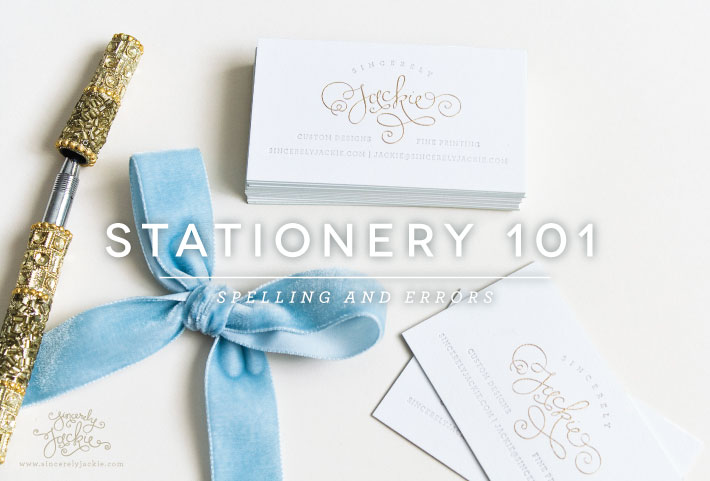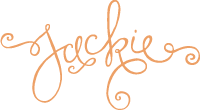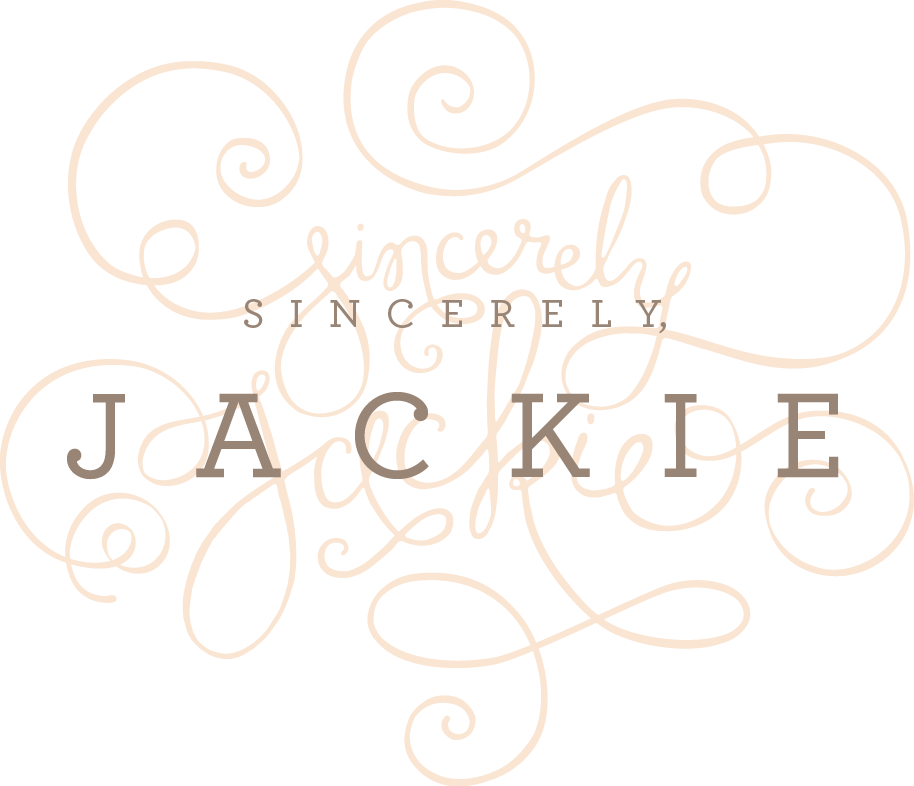Stationery 101: Spelling and Errors | New York Wedding Invitations

One of my favorite things to do as a designer is to educate my clients about the fundamentals of stationery. I often find myself discussing topics from how to spell the word “stationery”, to all of the unique paper options and print techniques that are available for any given project. I have found that the information is exciting and helpful for my clients and by going through the basics up front, the design process is easier and faster. Sharing some of these basic bits of information has been so helpful that I thought I would share with a wider audience, here on the blog. I’ll be doing a series of posts, titled Stationery 101, where I will go over all of the fundamentals in the world of stationery.
Today I want to start with the very first topic: the correct spelling of the word “stationery”. Might seem easy, but you’d be surprised how many people make a simple mistake.
Stationery, as in paper products and invitations, is spelled with an “e”: stationery
An object that does not move is “stationary”
It's a simple mistake that catches a lot of people, but it's wrong and you should be careful to use the proper word. If you’re shopping for stationery, always be on the lookout for the proper spelling of the word, especially from vendors. I would be a little concerned, as a consumer, to purchase an item from a vendor that incorrectly spells their core business product.
Moving along...
Now that we’ve that the most fundamental spelling issue out of the way, let’s move on to every designer’s, and client’s, worst nightmare: a spelling mistake or error in a final design.
I would love to say that spelling errors never happen, and that only amateurs would let a mistake run through press, however, I would be lying. Mistakes happen to the best of us. Back in high-school when I was dating my husband, he worked at a popular deli - the sign out front said "Delacatessin". While most errors are caught before sending a design for print, there are those dreaded occasions where a design is printed with a mistake on it, and sometimes it takes a while before it even gets noticed.
Final proofing responsibility is generally put on the client, which I do as well, as per my contract. Mistakes are never intentional, and it's always awful for everybody involved when it happens, but as the client, you need to very carefully check your proofs before approving for print. Designers are focused on the design, layout, and file preparation, and we assume the information you provide us with is accurate (ceremony location, spelling of the groom's name, etc). I always run spell check on all of the proofs, but information is often copied and pasted directly from the client to the design, so if something like a name, location, or time is wrong, spell check won't even pick it up.
Now, let's be clear, while it is the clients responsibility to check accuracy and spelling before giving the final approval for print, it still is awful for everybody involved (client, designer, and even the printer) when a mistake is made. Not every mistake can be avoided, but I find that doing four important steps will help avoid a few nights of lost sleep.
First, as a client, be aware that most designers will copy and paste the information you provide to them. Be sure to provide your designer with correct information up front. If you spell your name wrong or get the ceremony time wrong, the designer most likely won’t even know that a mistake was ever made.
Second, as a designer, I always run a spell check on the proof before saving it. Simple spelling mistakes will be found, but as mentioned above, more personal information won’t be corrected. It doesn't hurt, as a client, to remind your designer to run a simple spell check on the final proof.
Third, take your time. From experience I can tell you that a huge percent of errors are made on rush orders (which is part of why I no longer accept rush orders). When you feel rushed, you may be so anxious to have invitations finished that you quickly browse over the proofing process. Be sure to allow yourself twice as much time as you think you'll need, and if you cannot do that, at least give yourself time to follow step number four, below.
Fourth, prior to giving the final approval for print, have a trusted outsider review your final print draft. Give it to somebody that has an accurate eye for detail, and let them spend a day or two checking for accuracy.
Lastly, if a mistake does pass through, take a deep breath and start working with your designer to remedy the situation as efficiently as possible. I can tell you from experience that if you’re working with me and a mistake gets through, I’ll be right there with you in feeling upset, and I'll work twice as hard to make sure you still get the perfect invitations.
So there you have it, Stationery 101: Spelling and Errors. I hope you’ve found this helpful, and I look forward to sharing additional insights over the next few weeks!
Sincerely,
